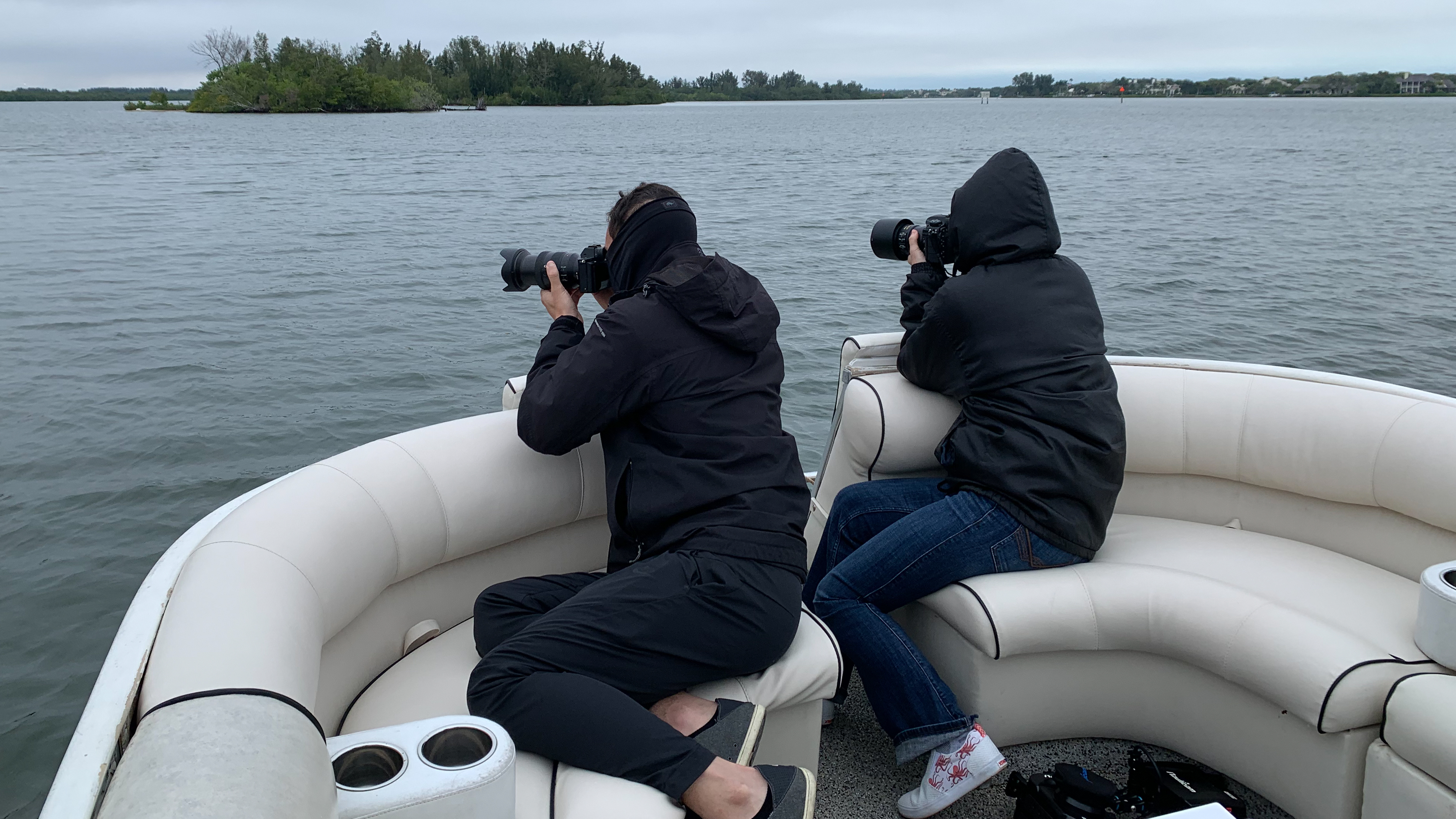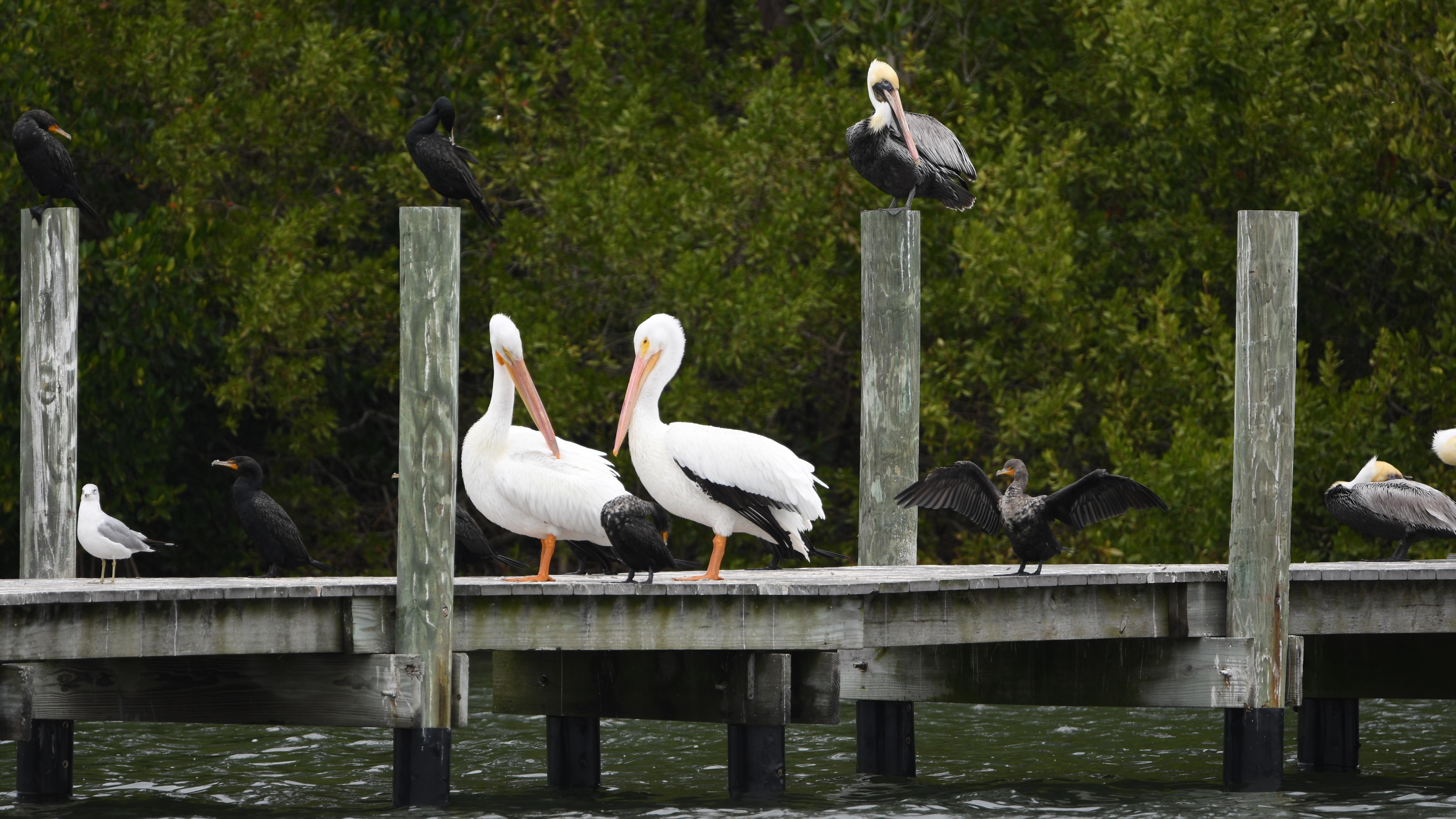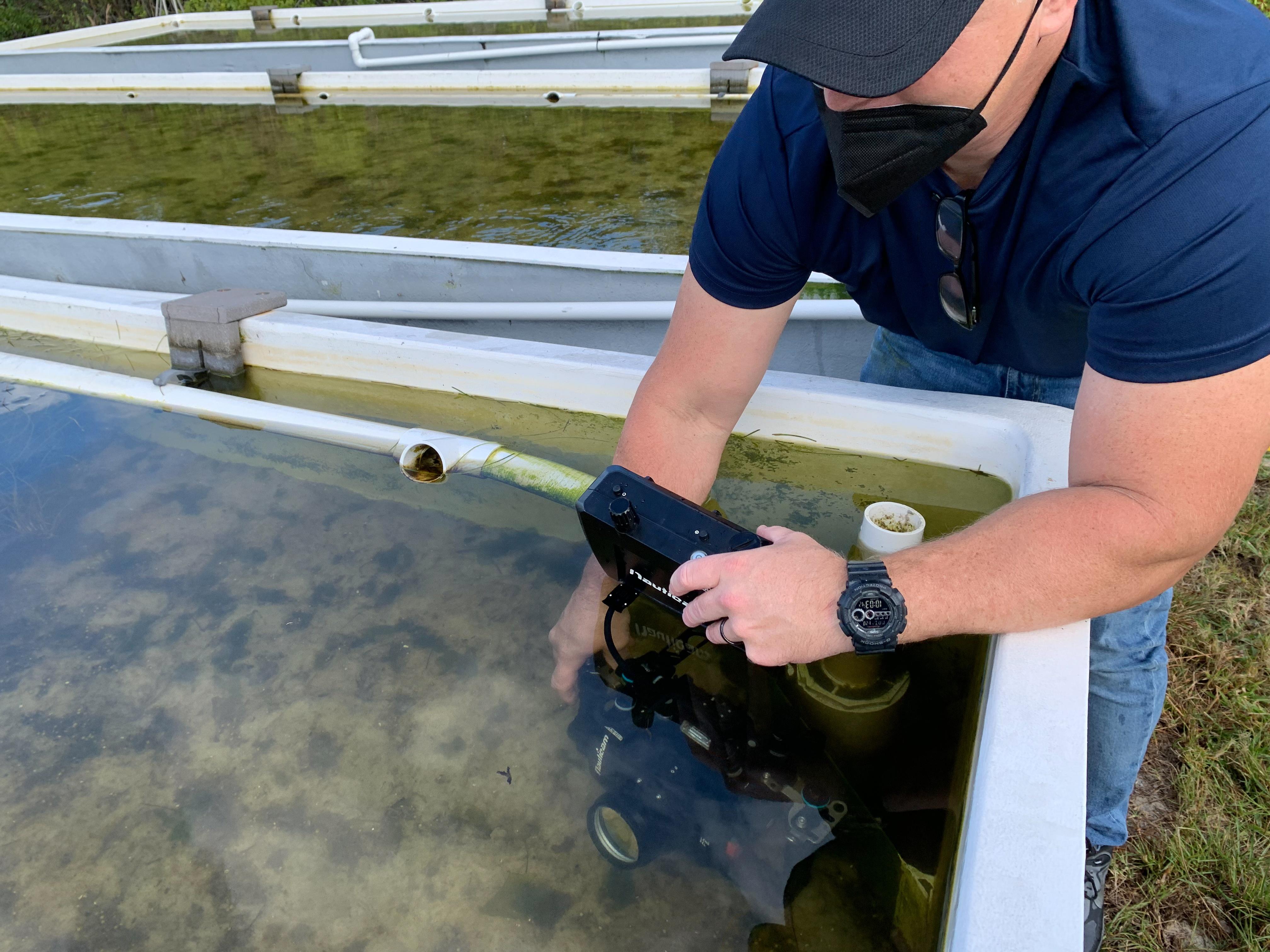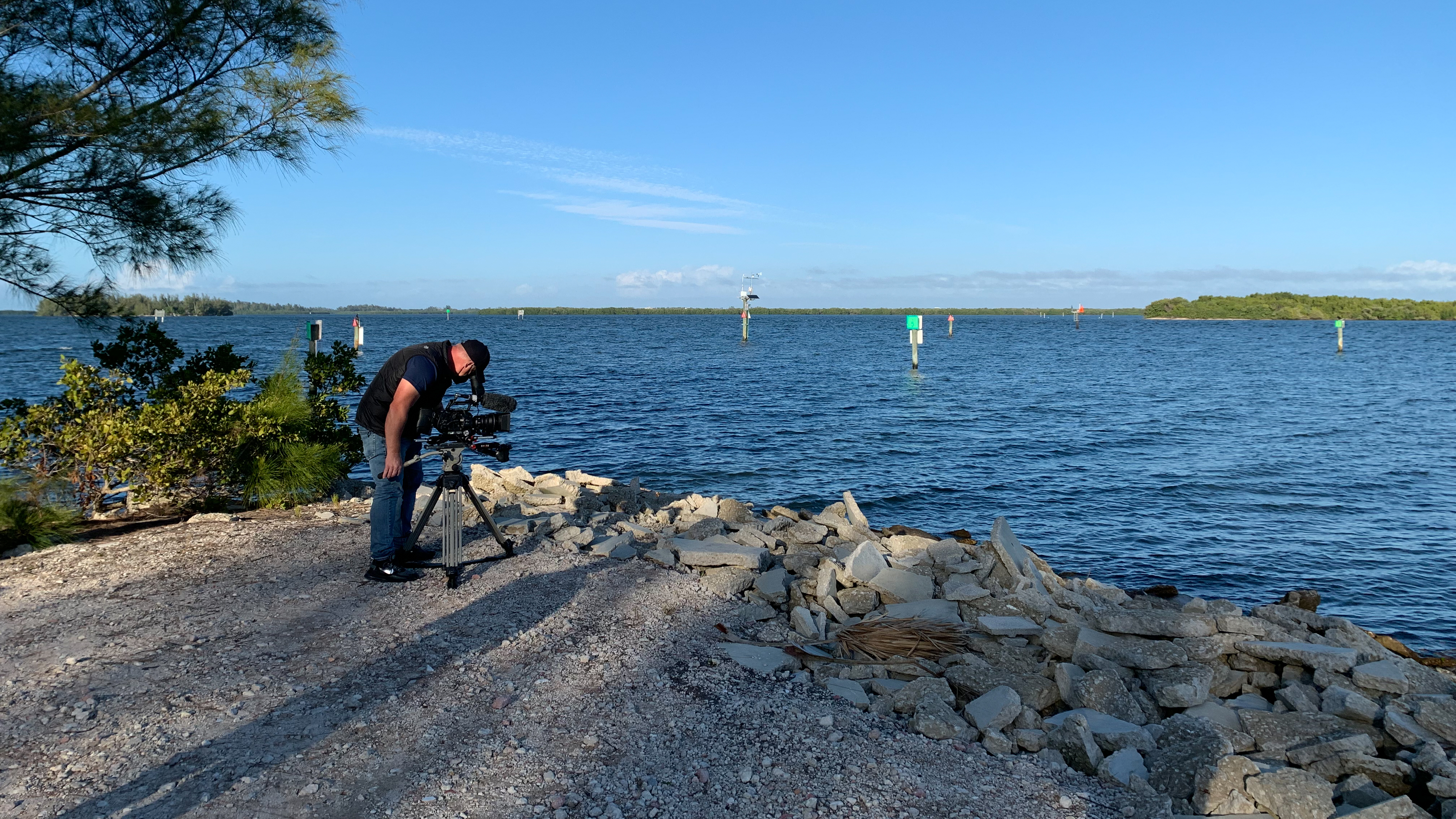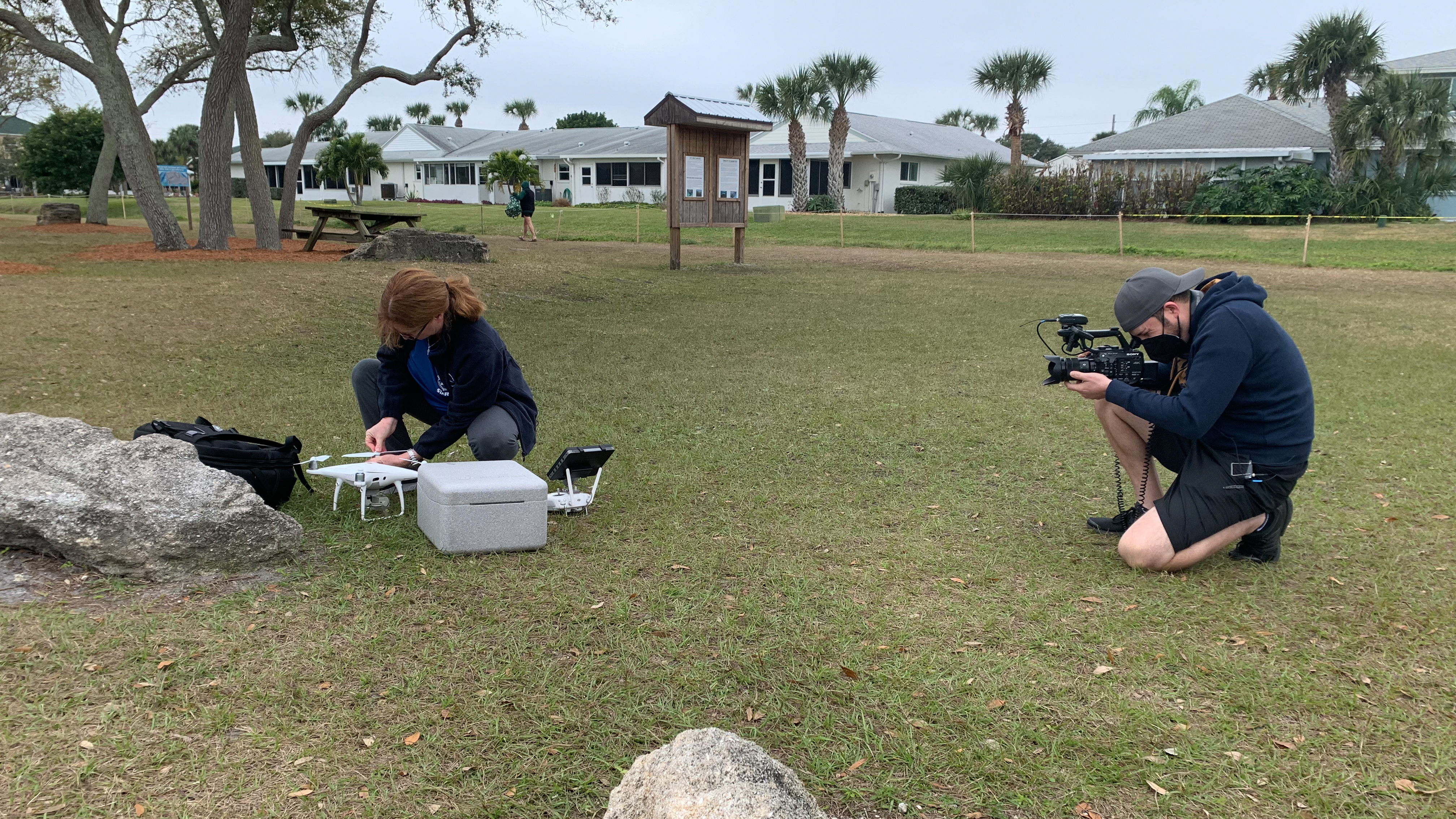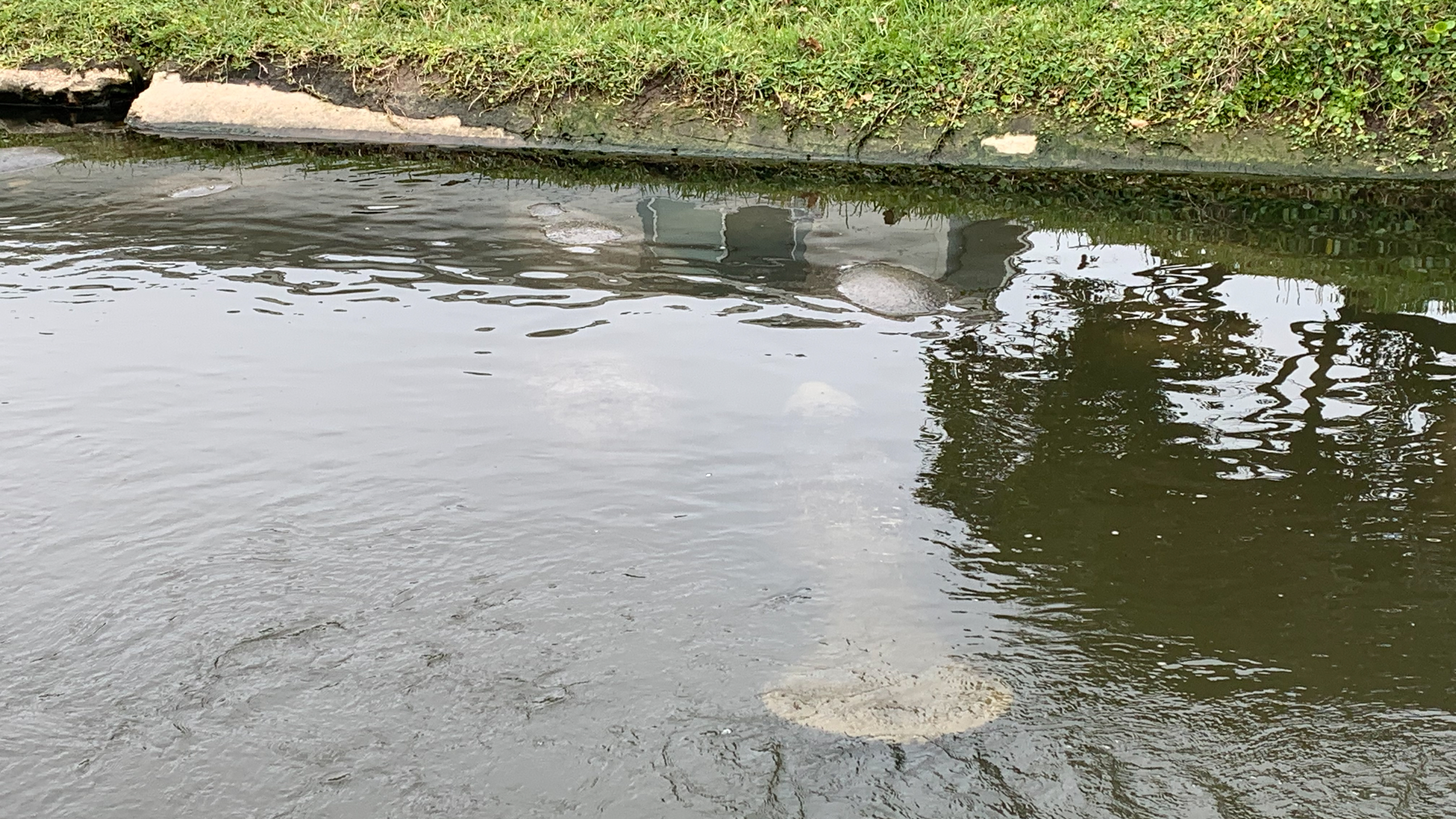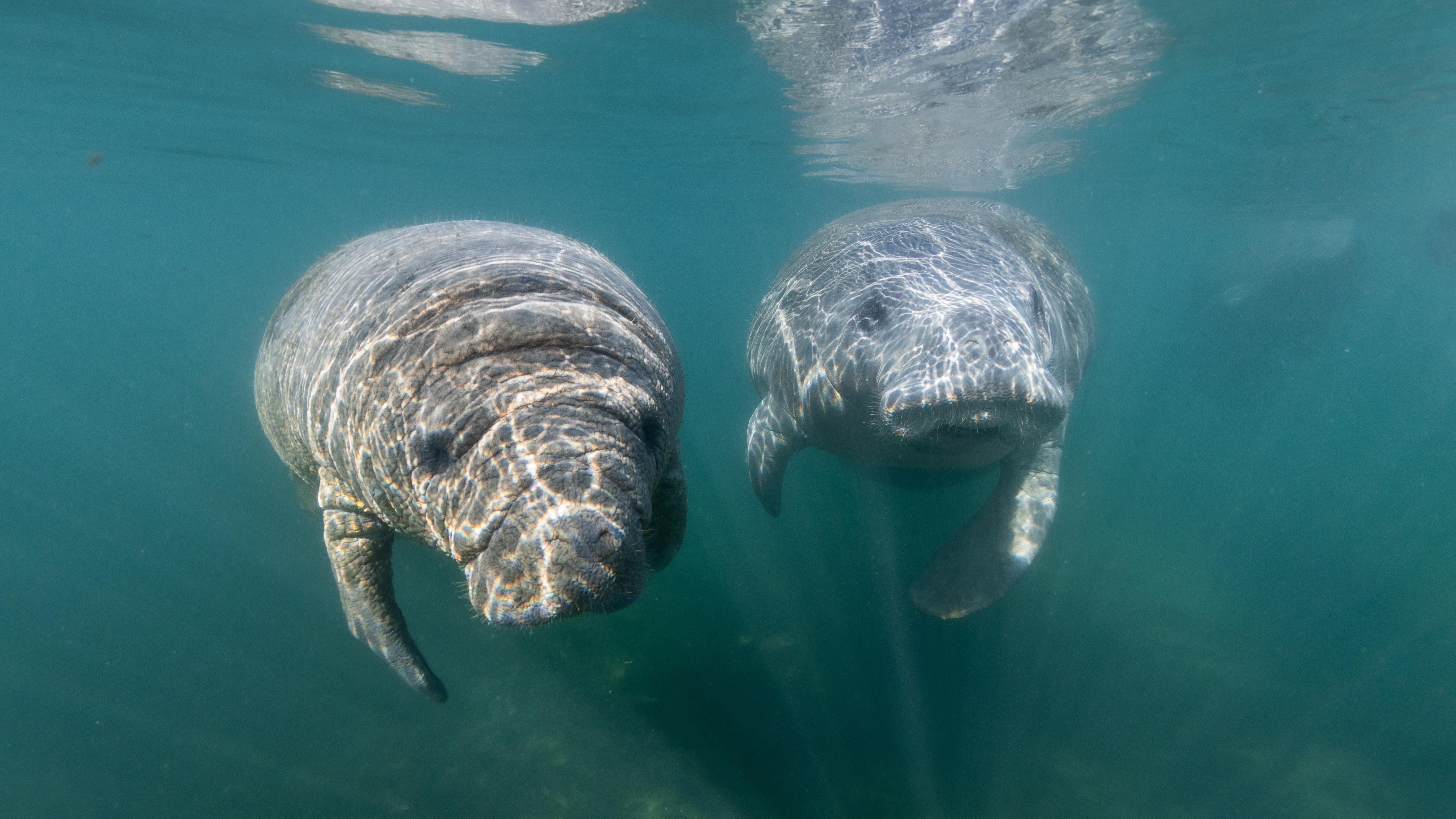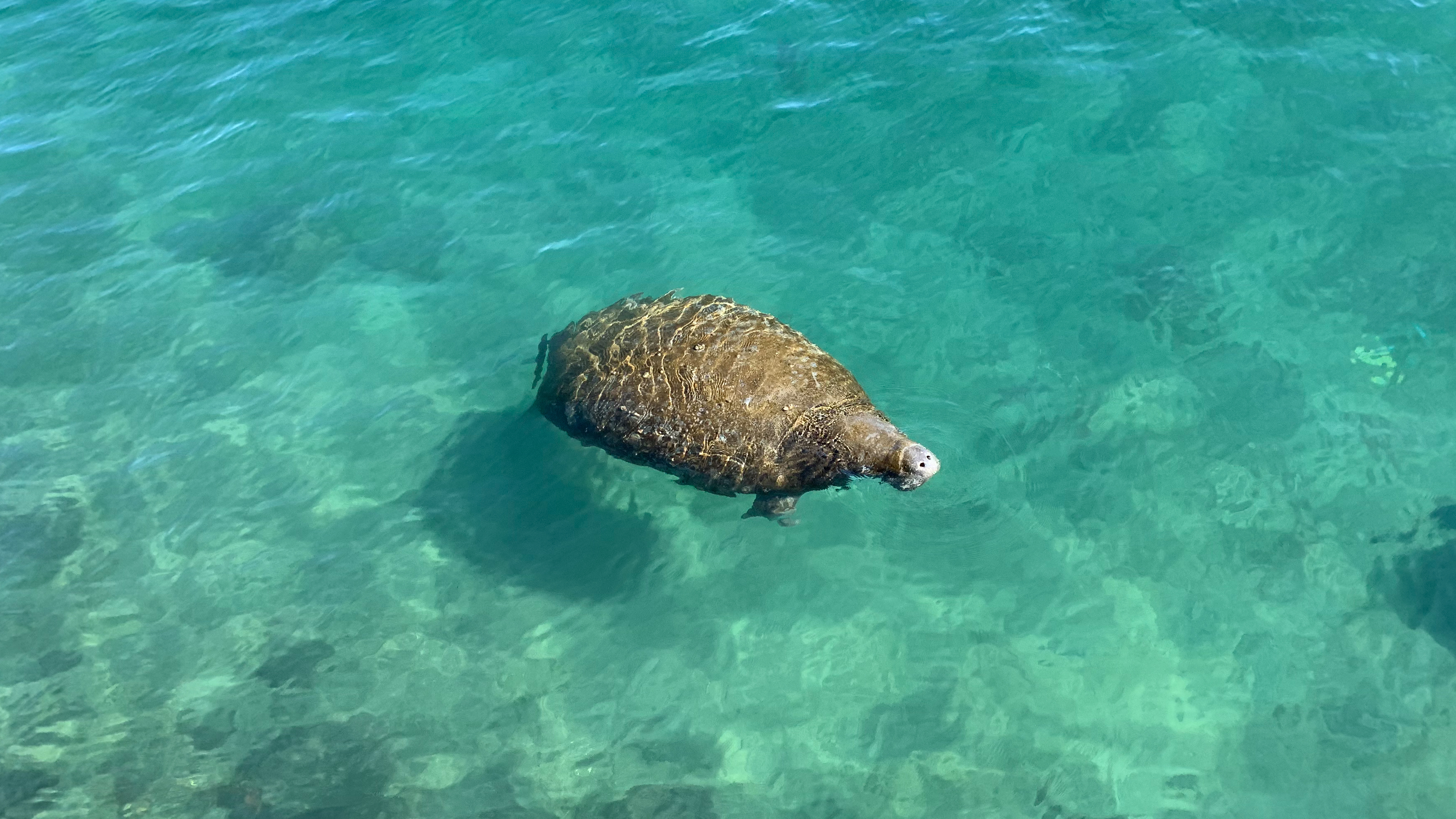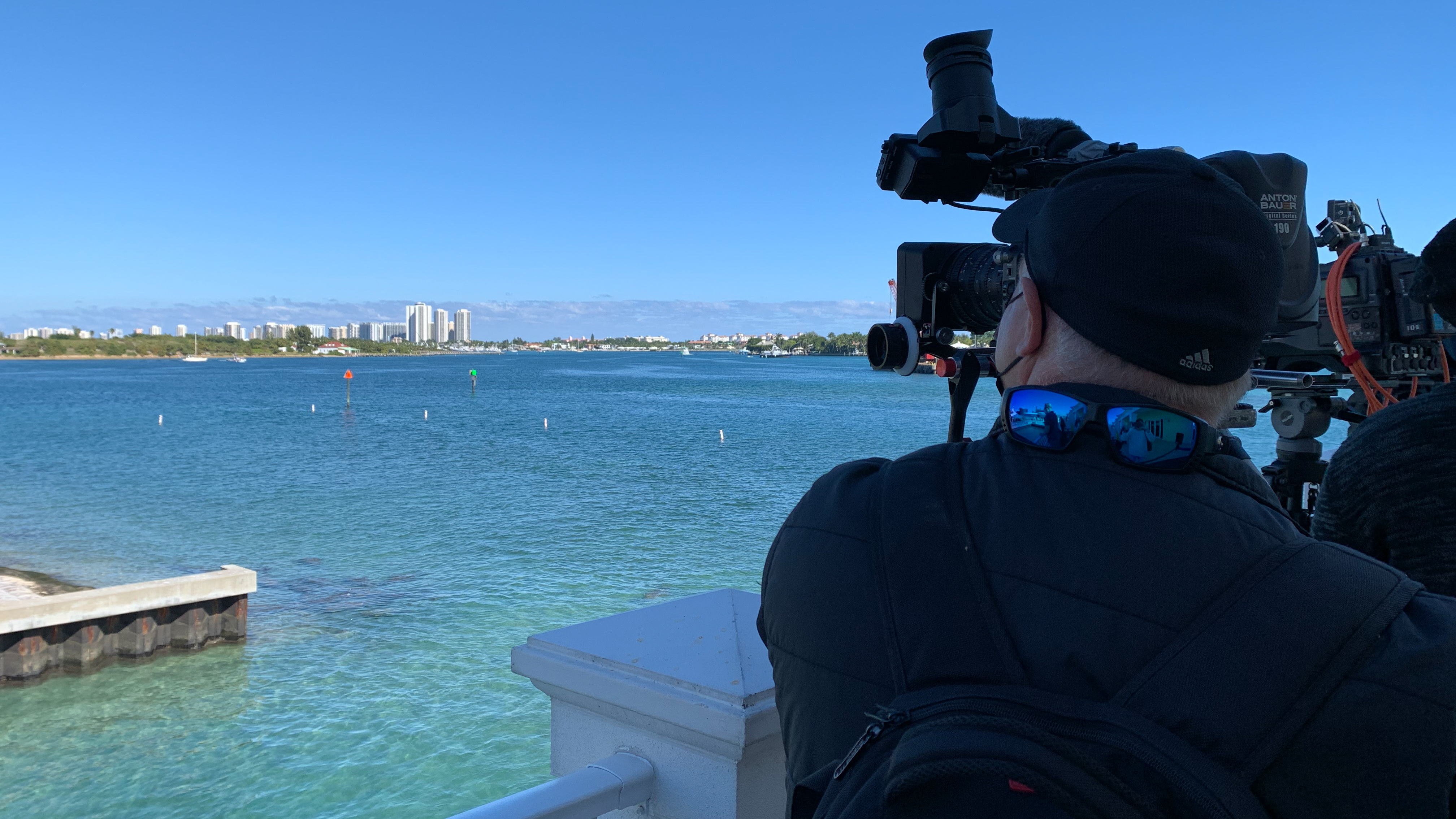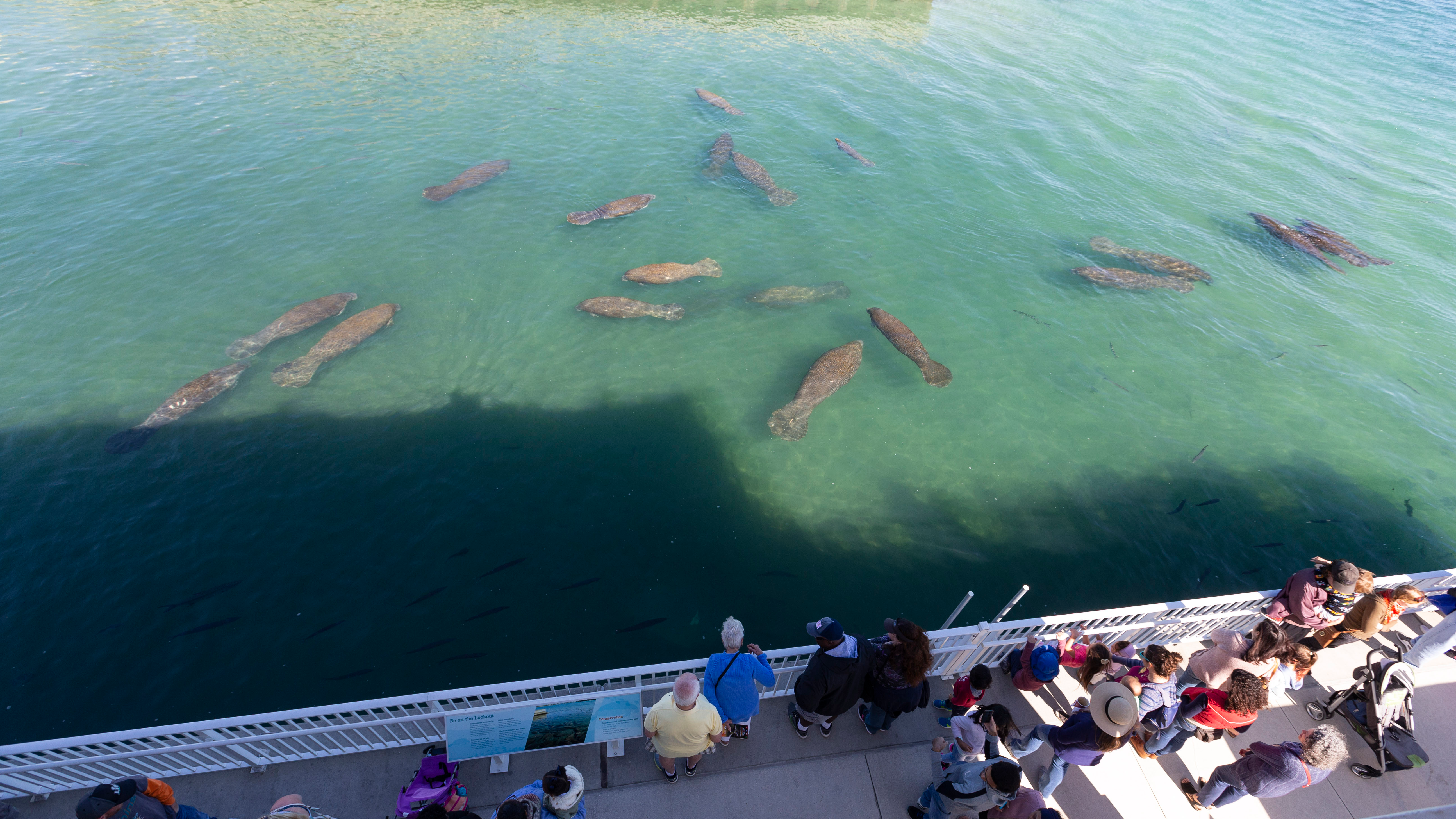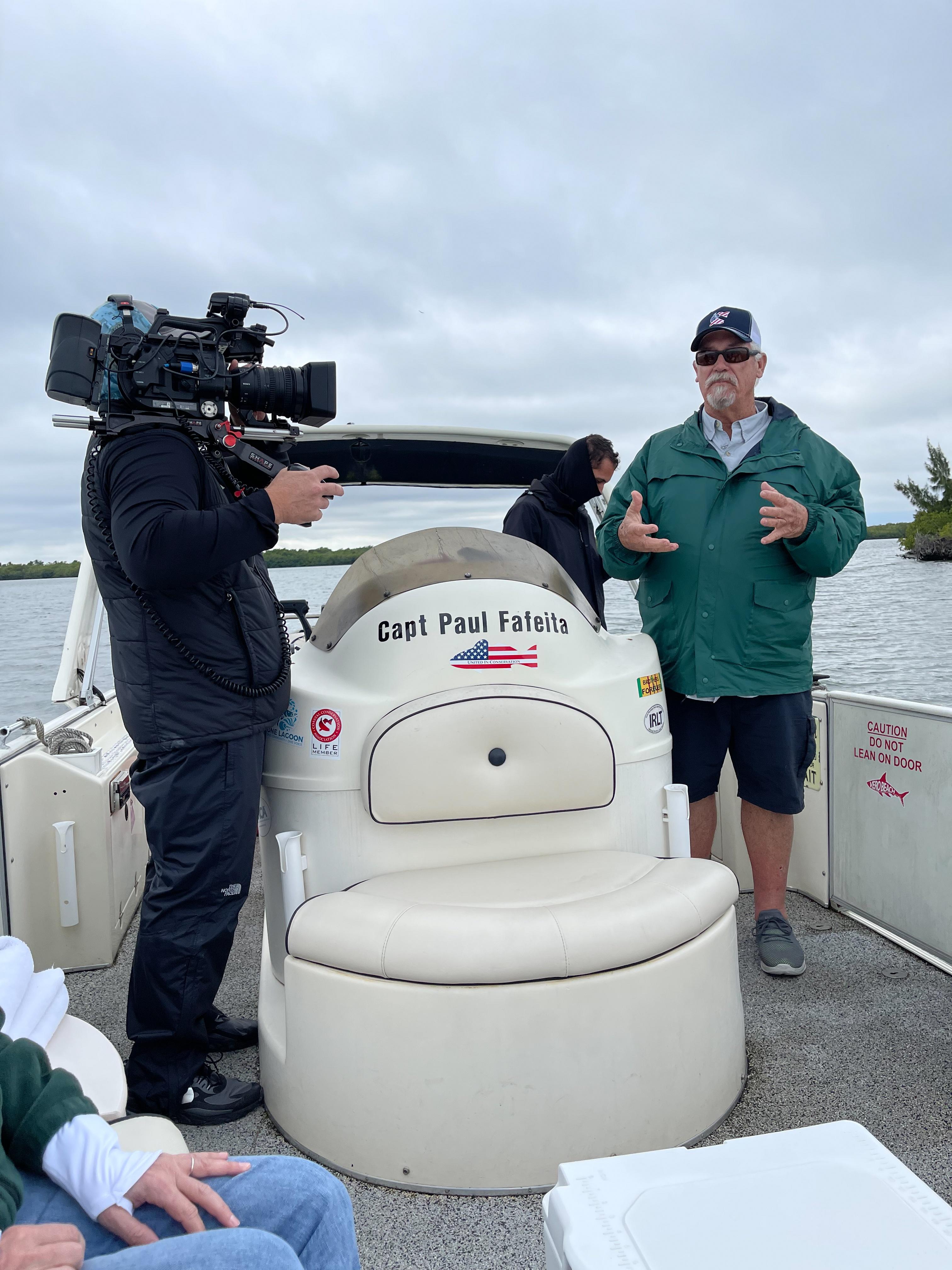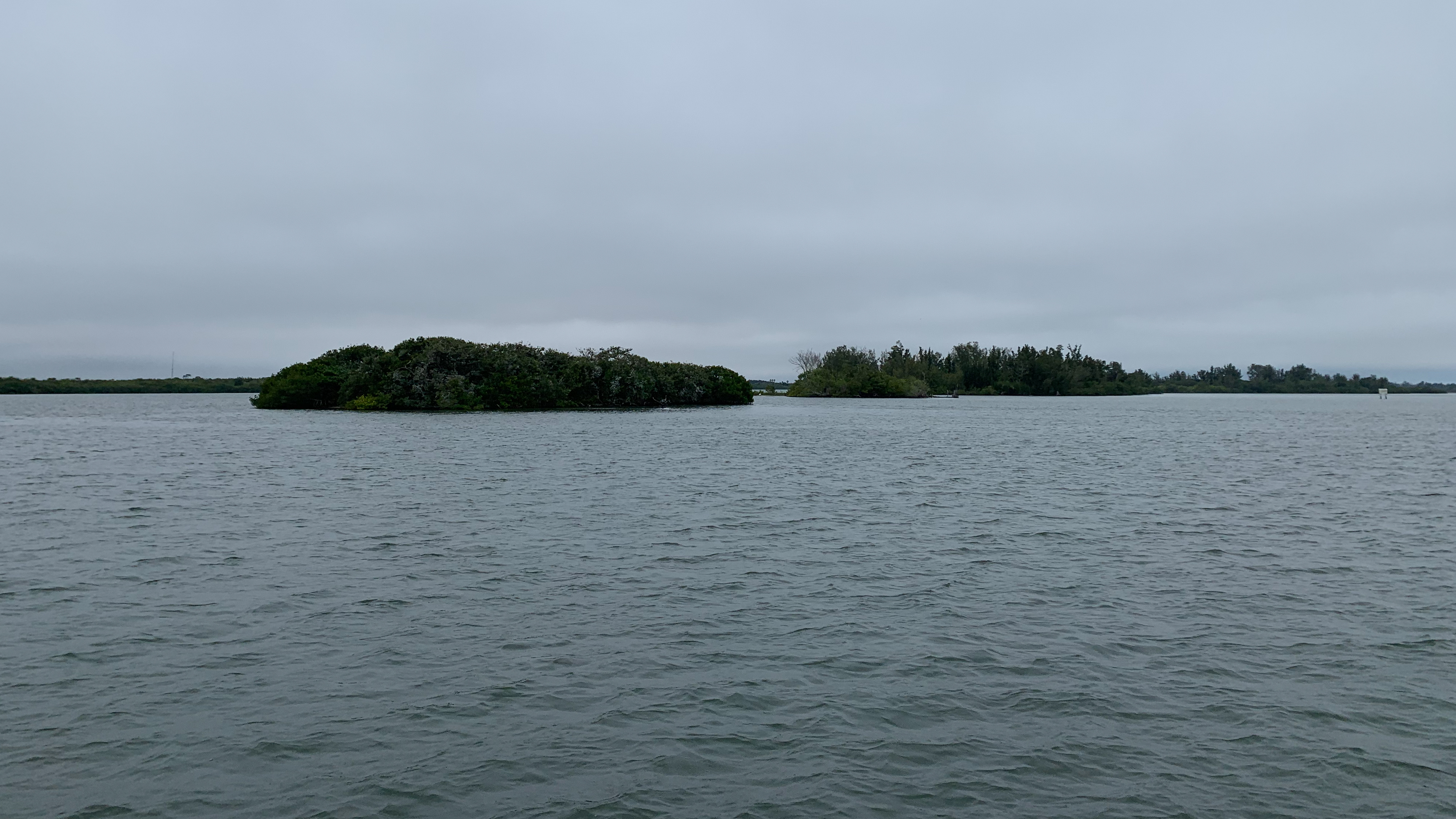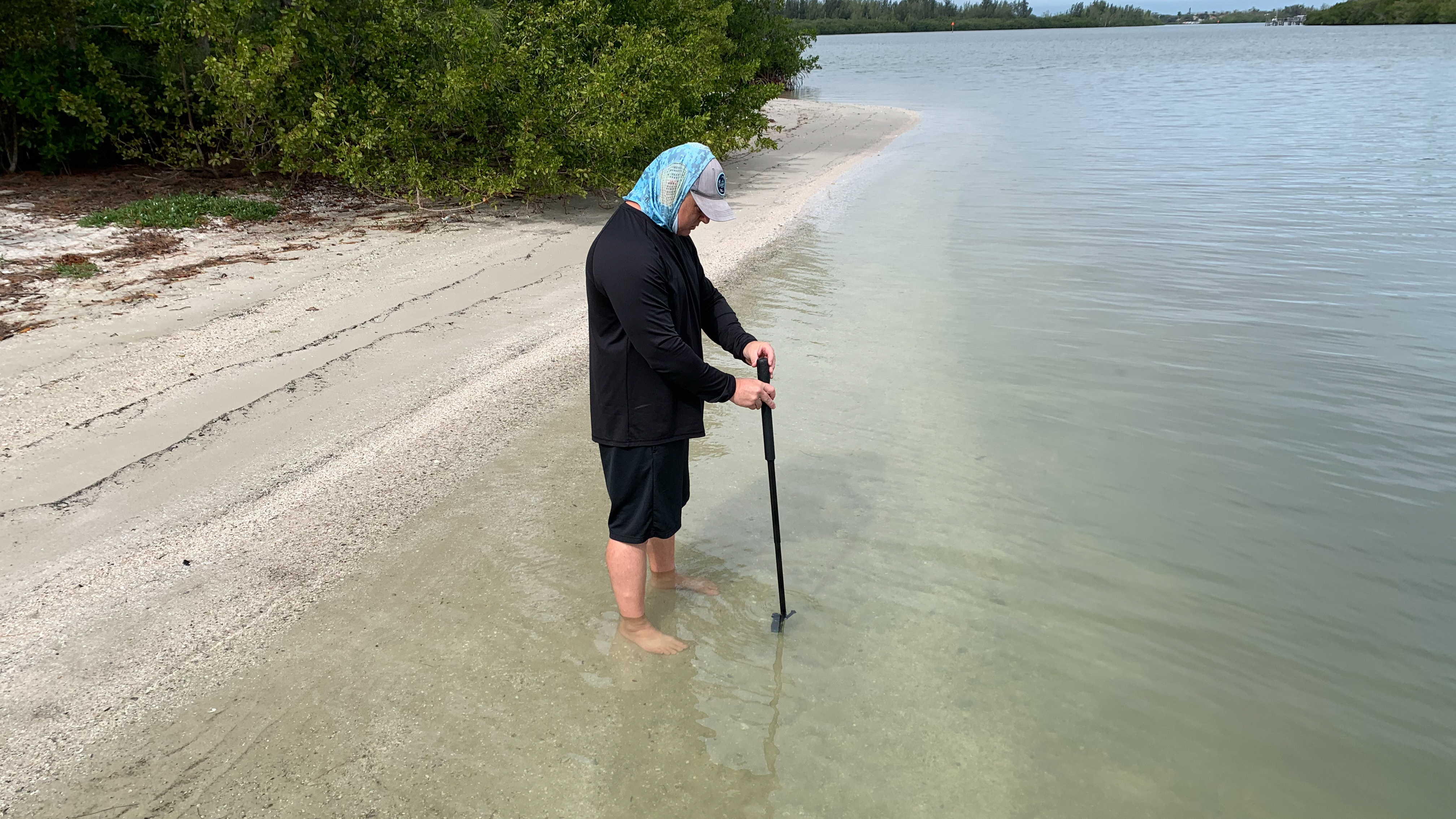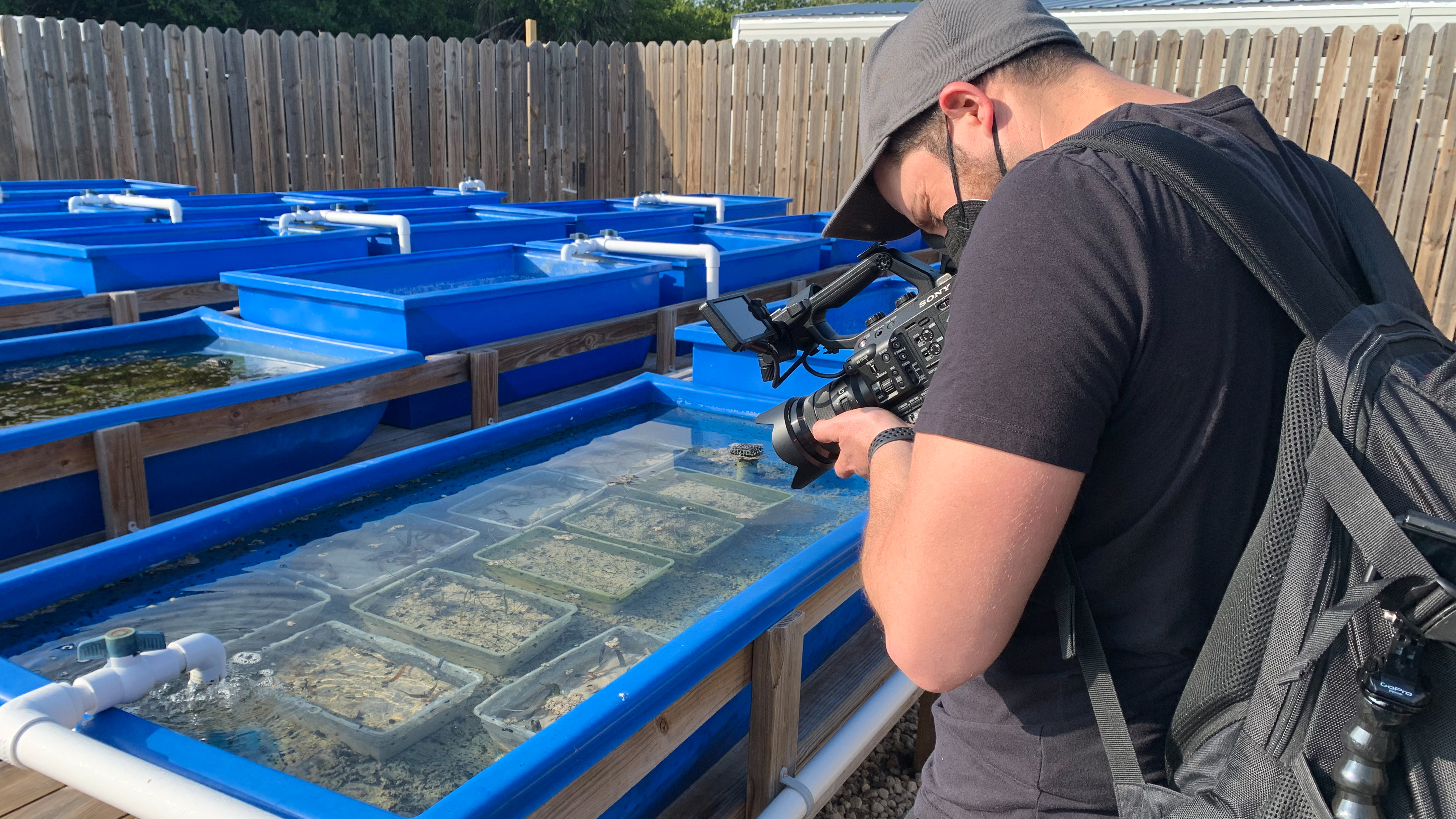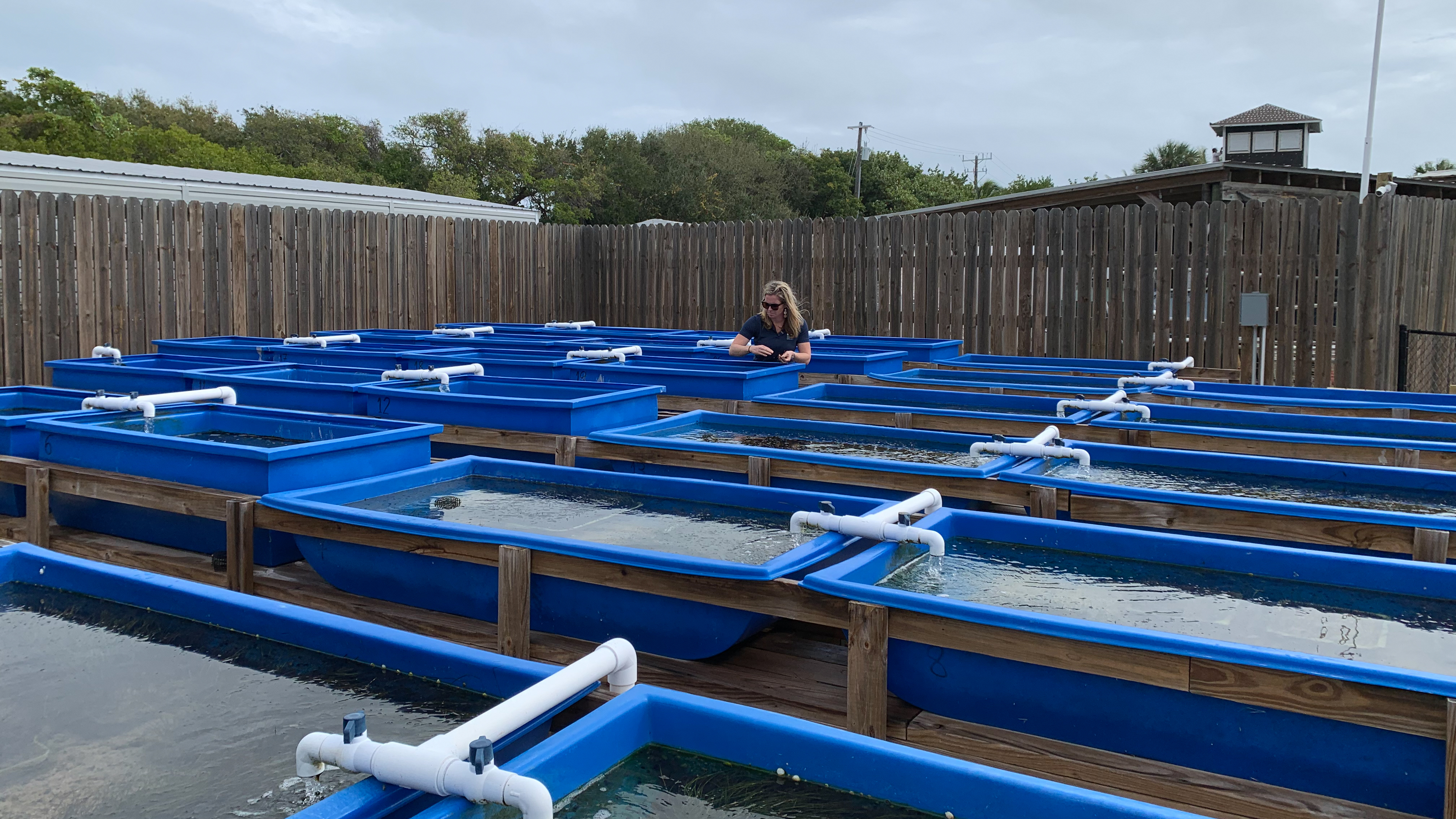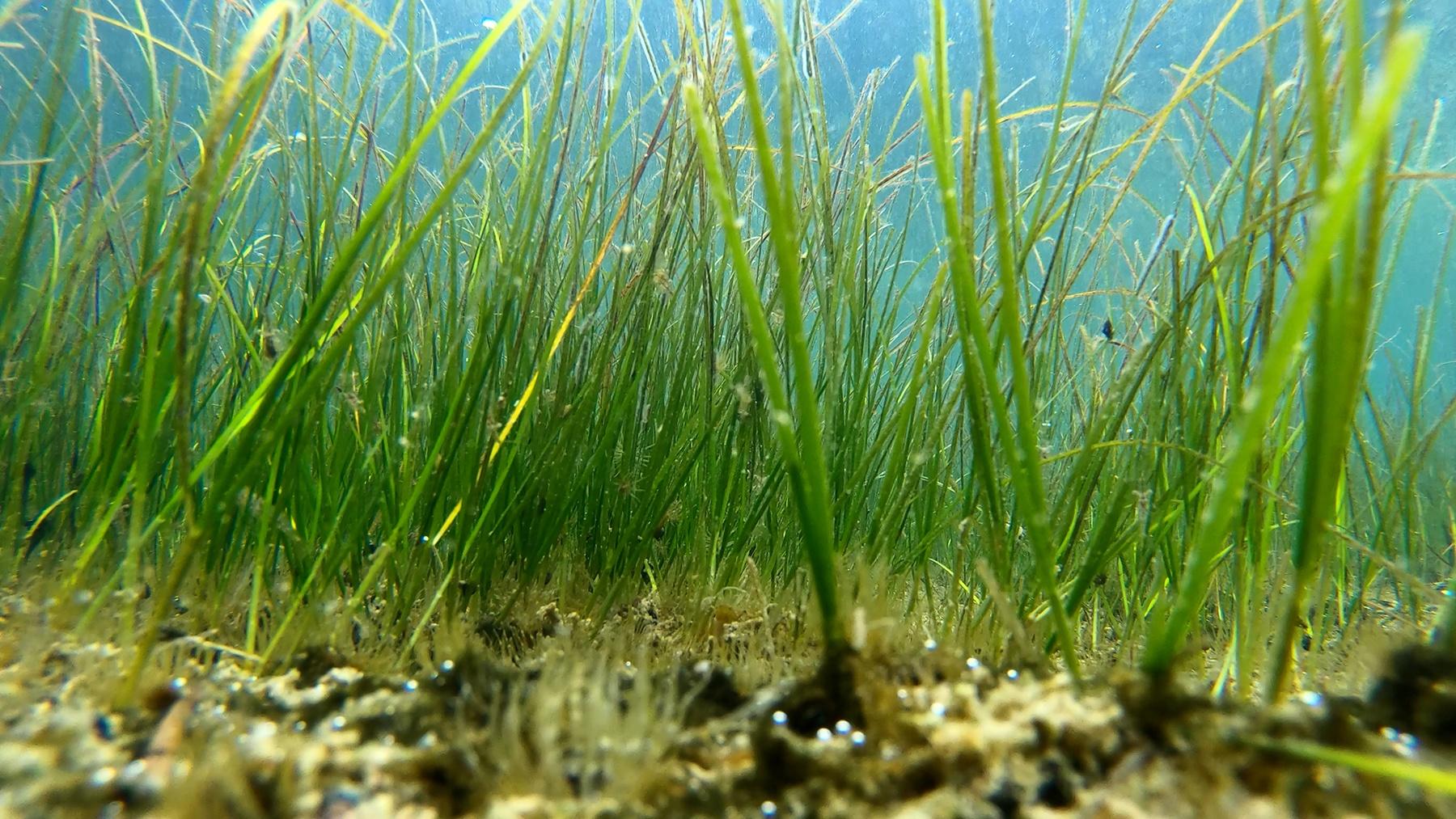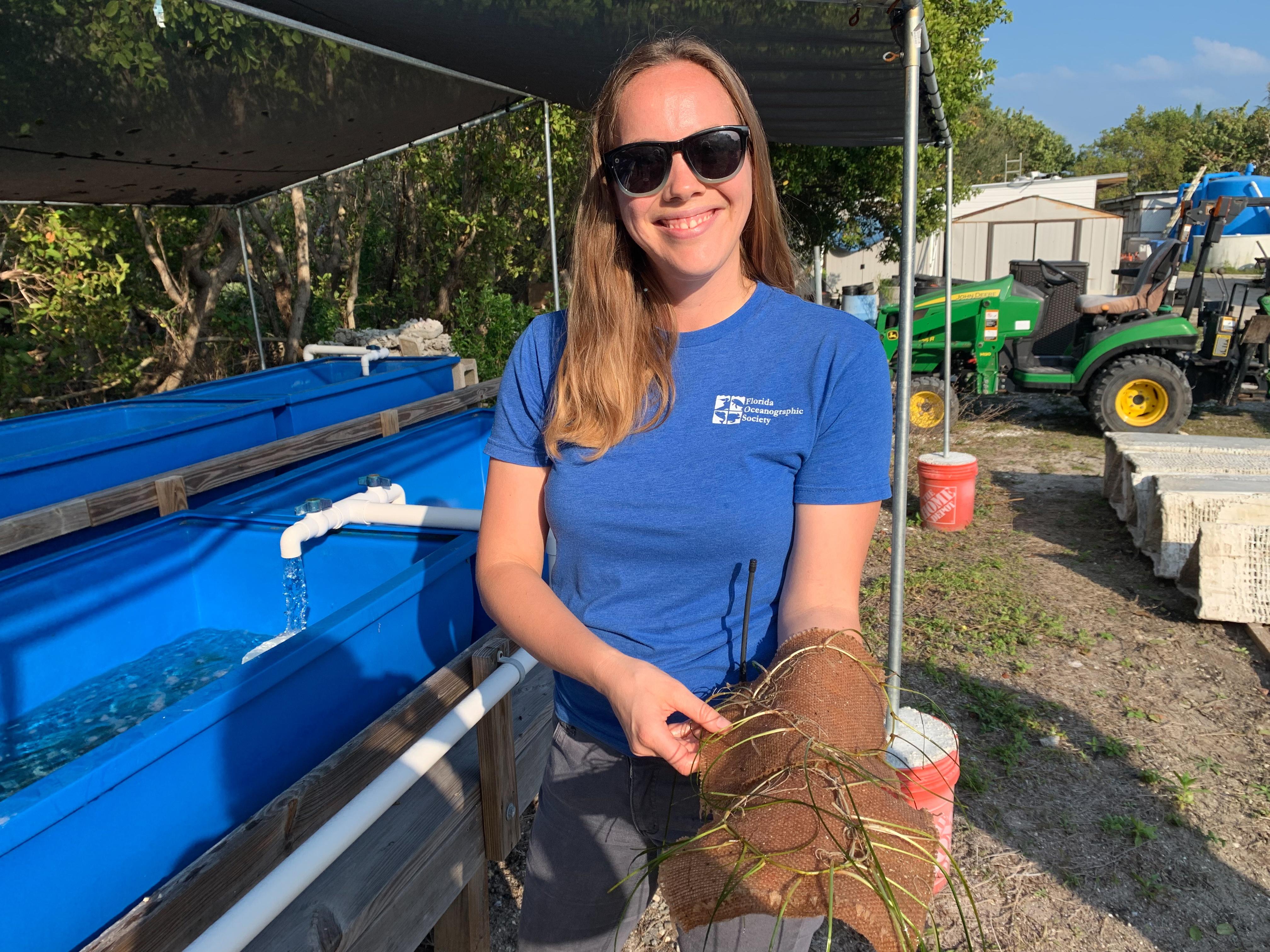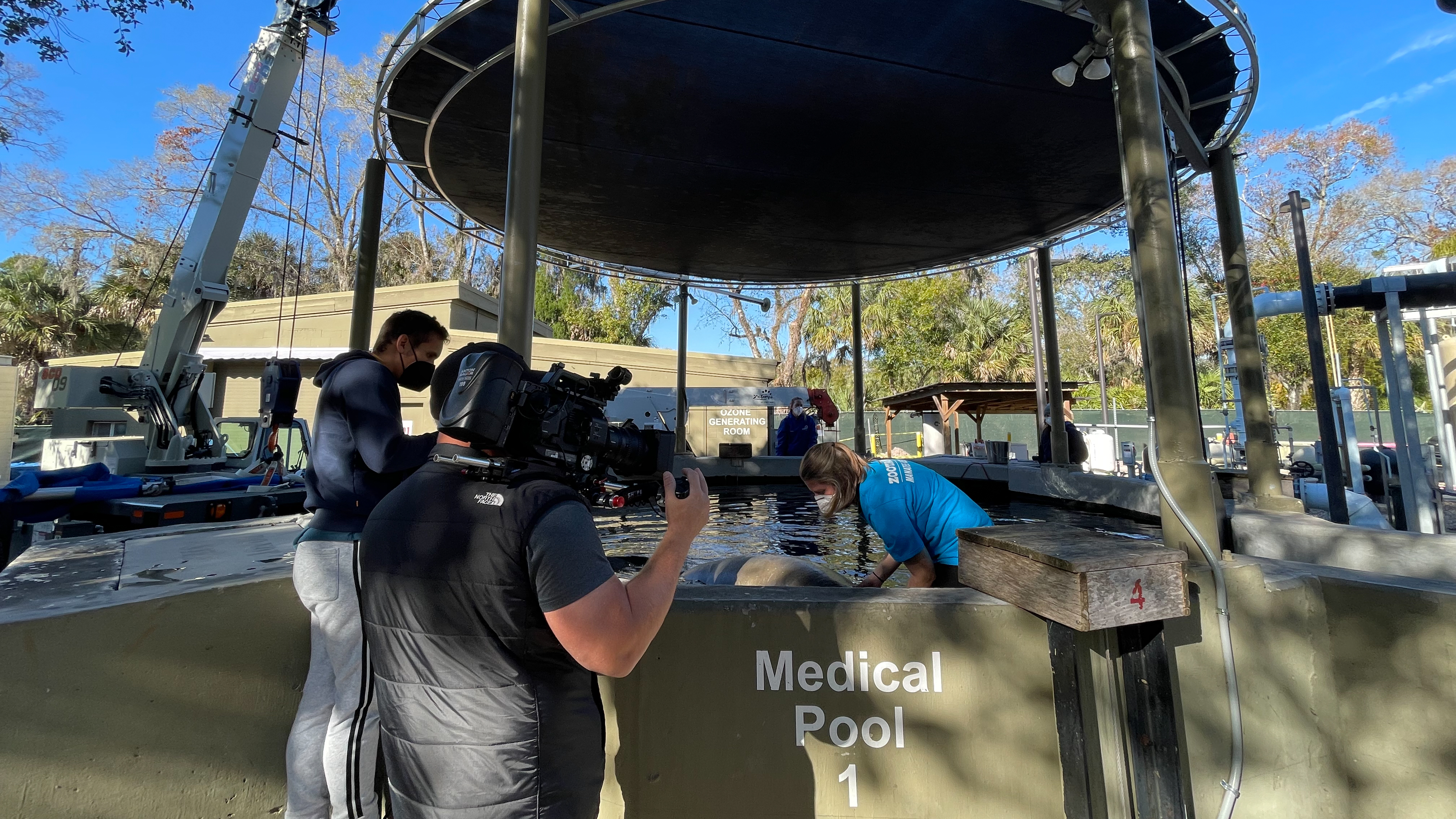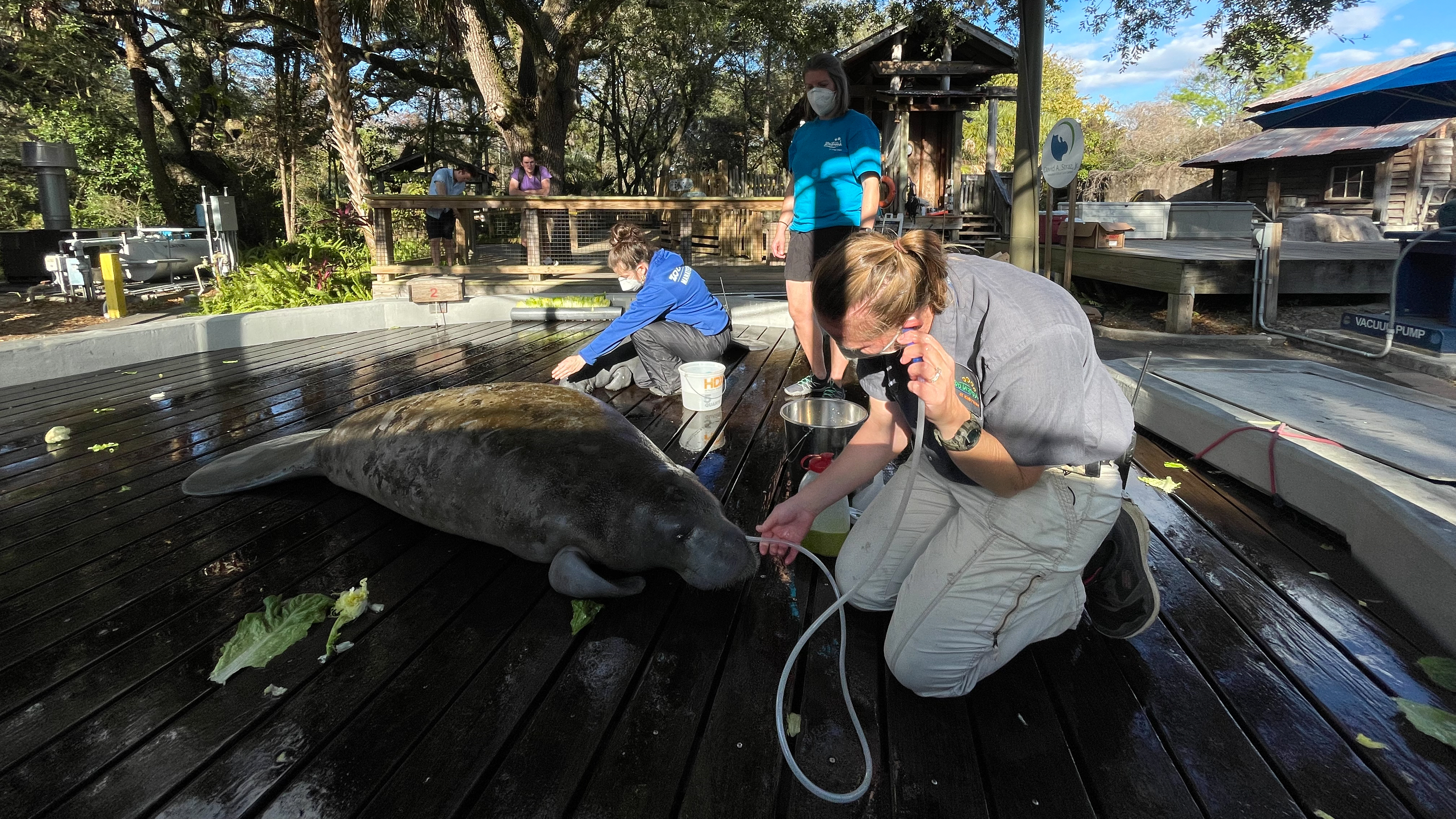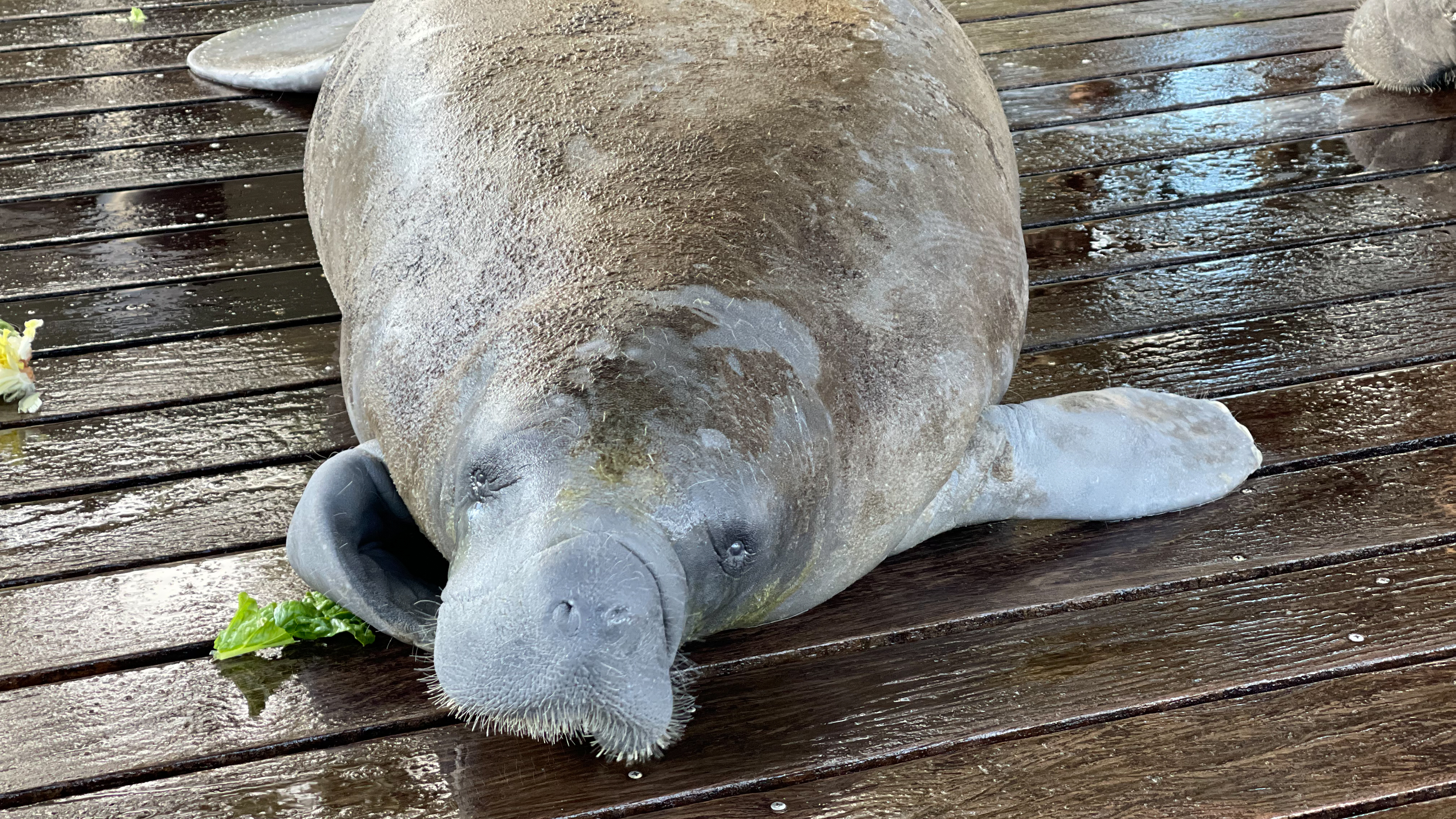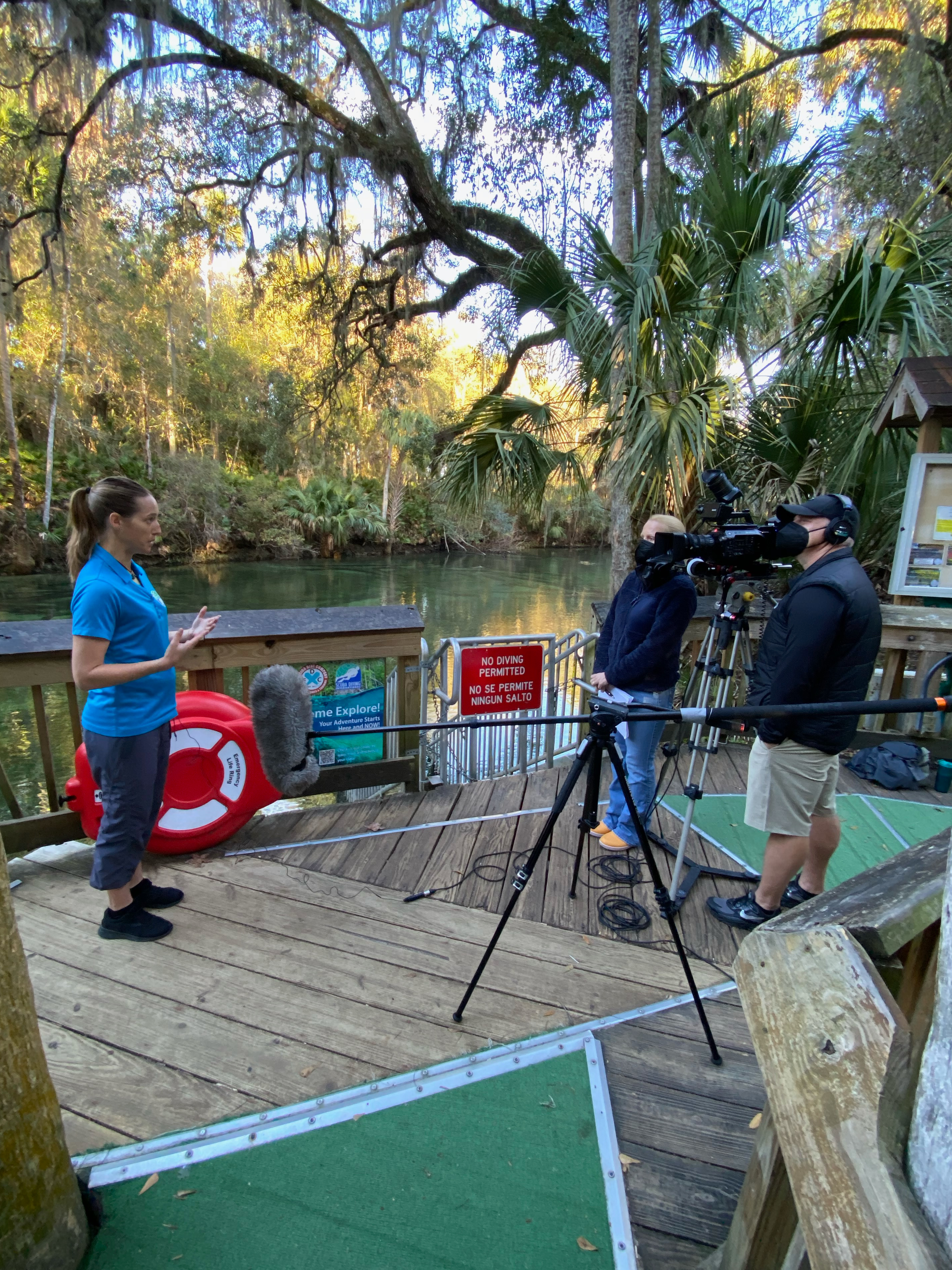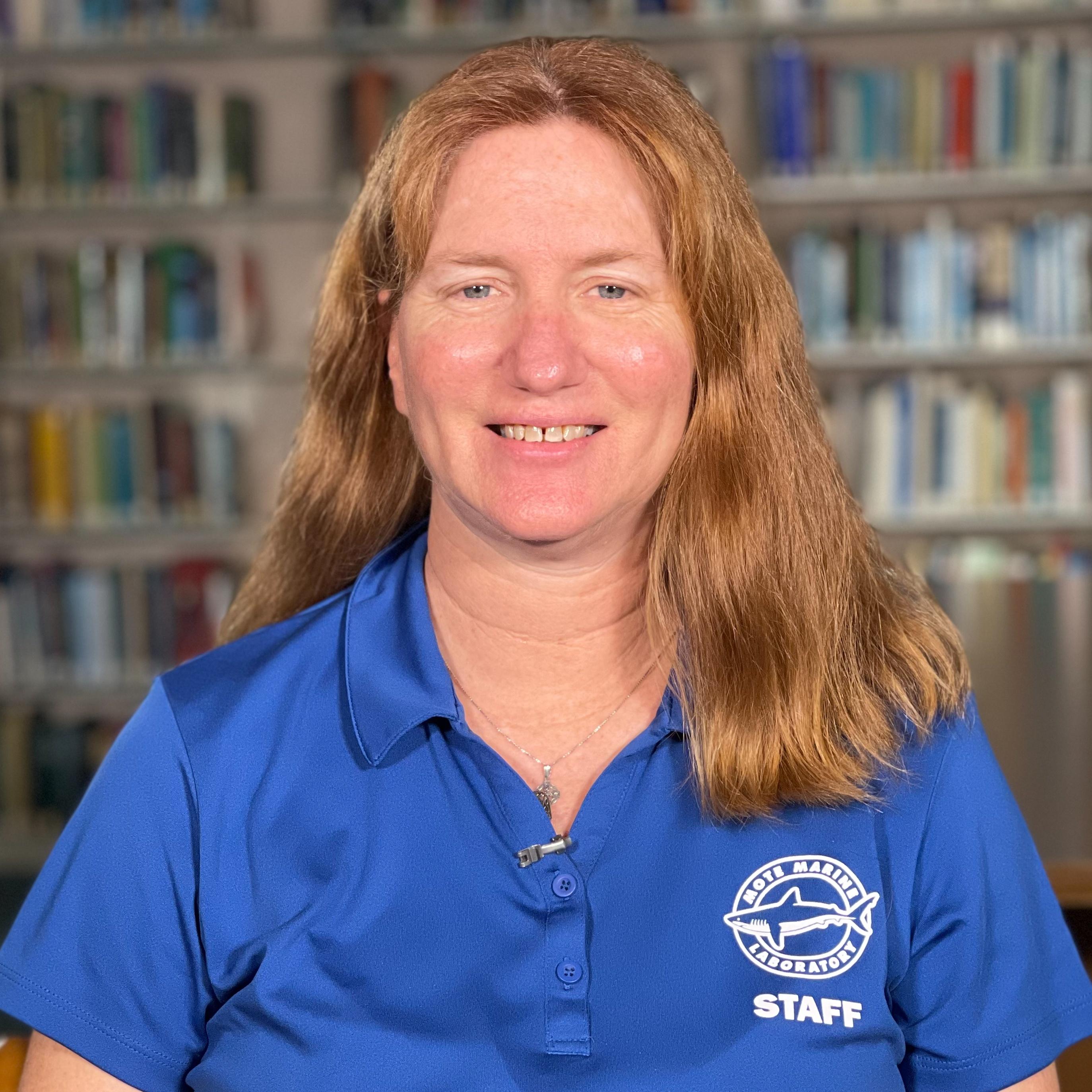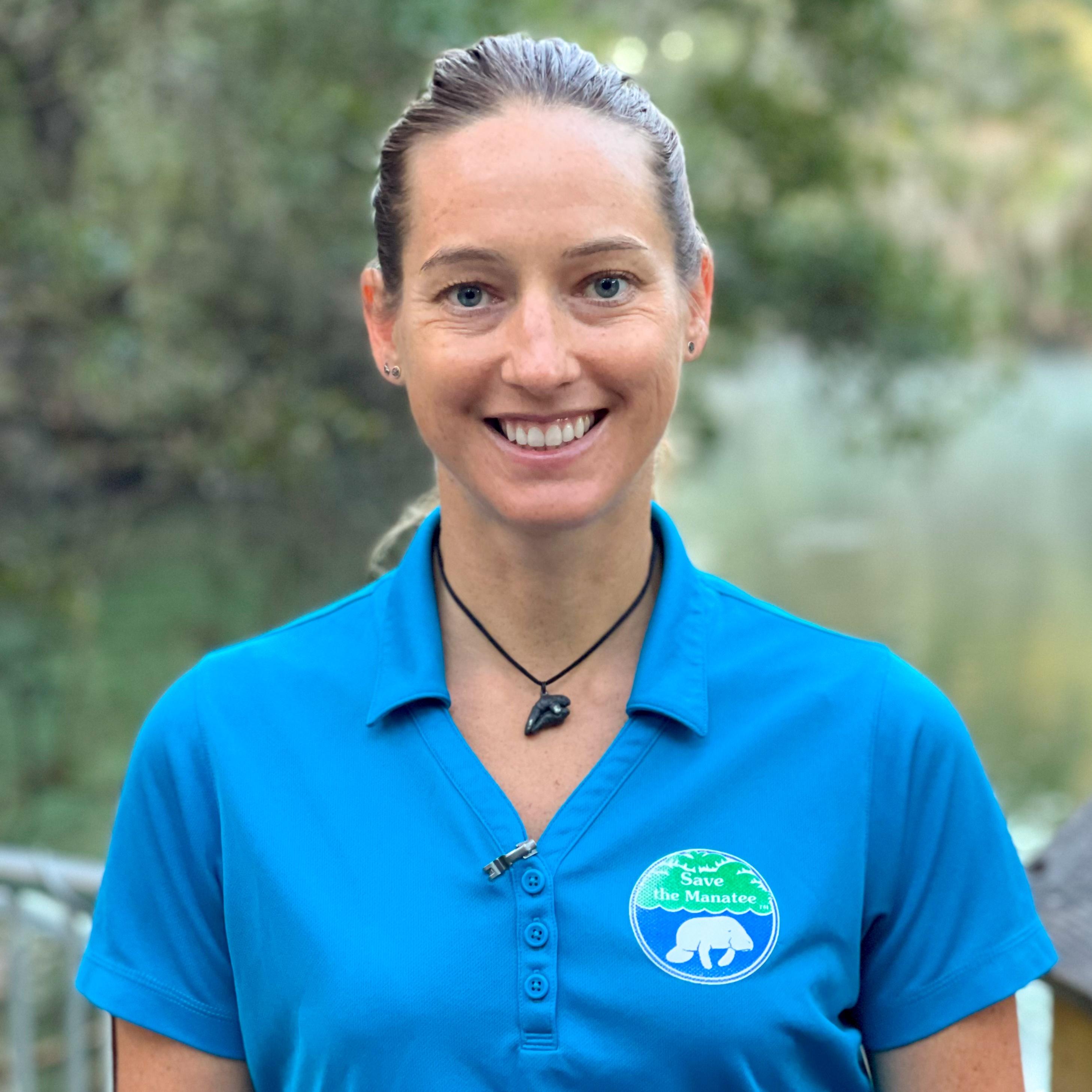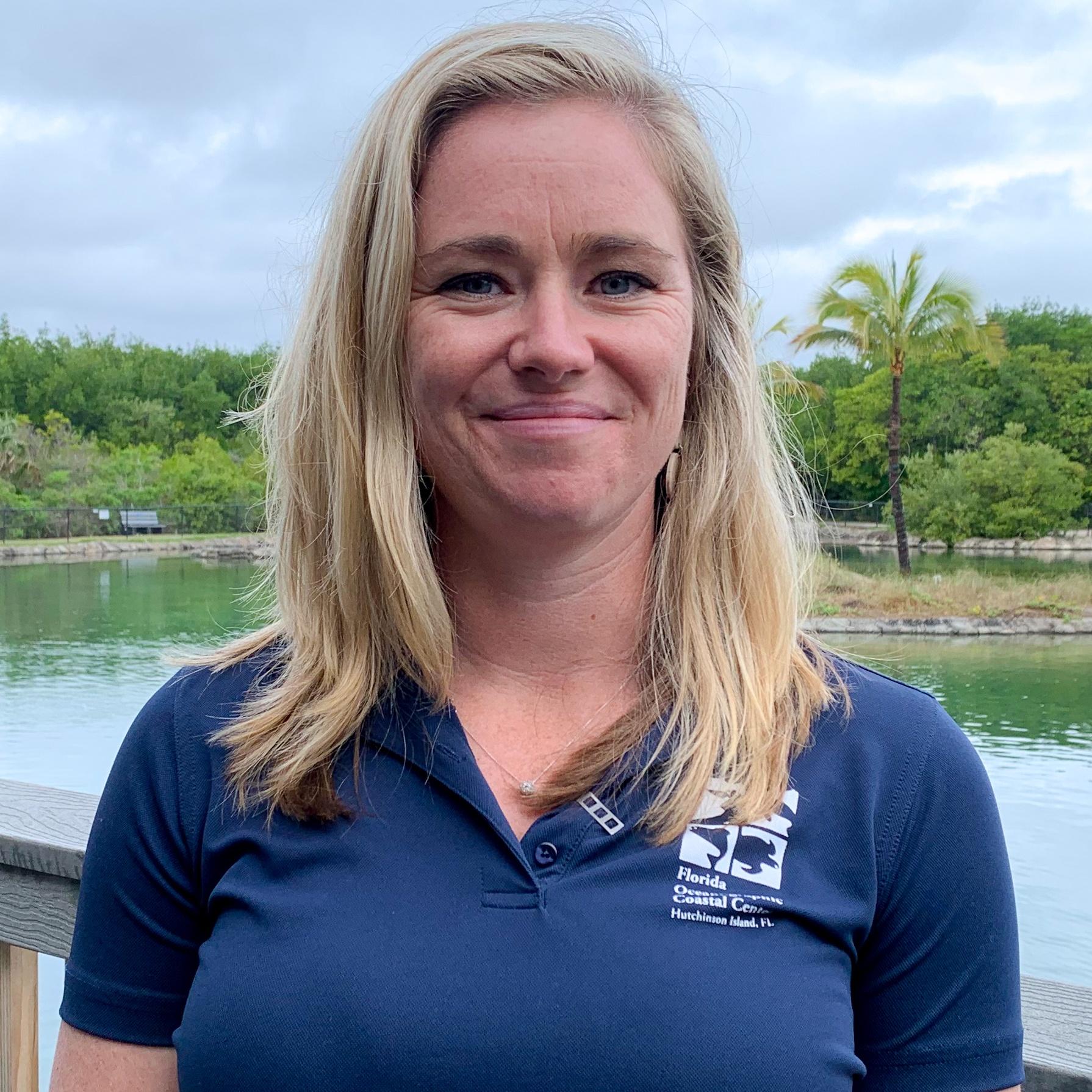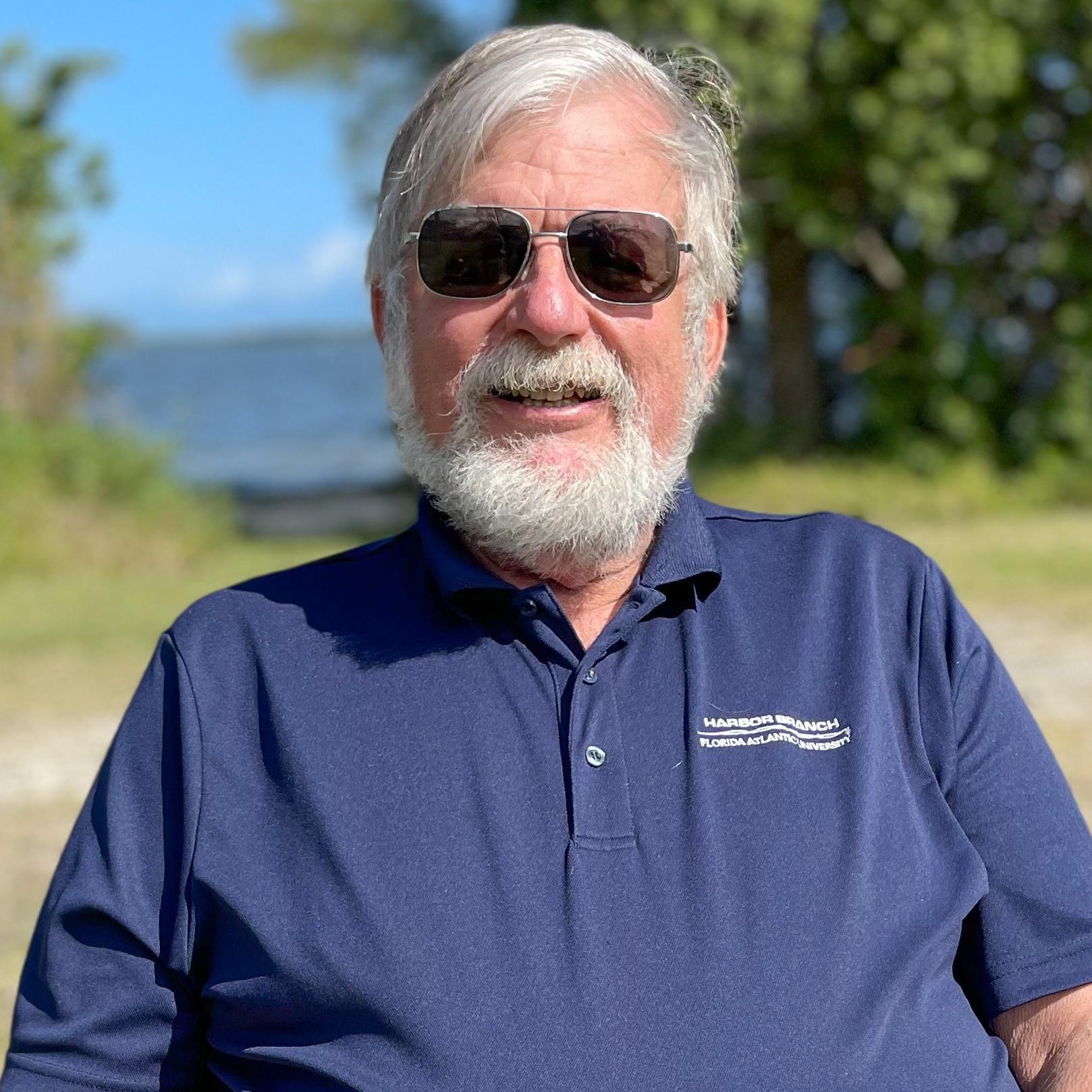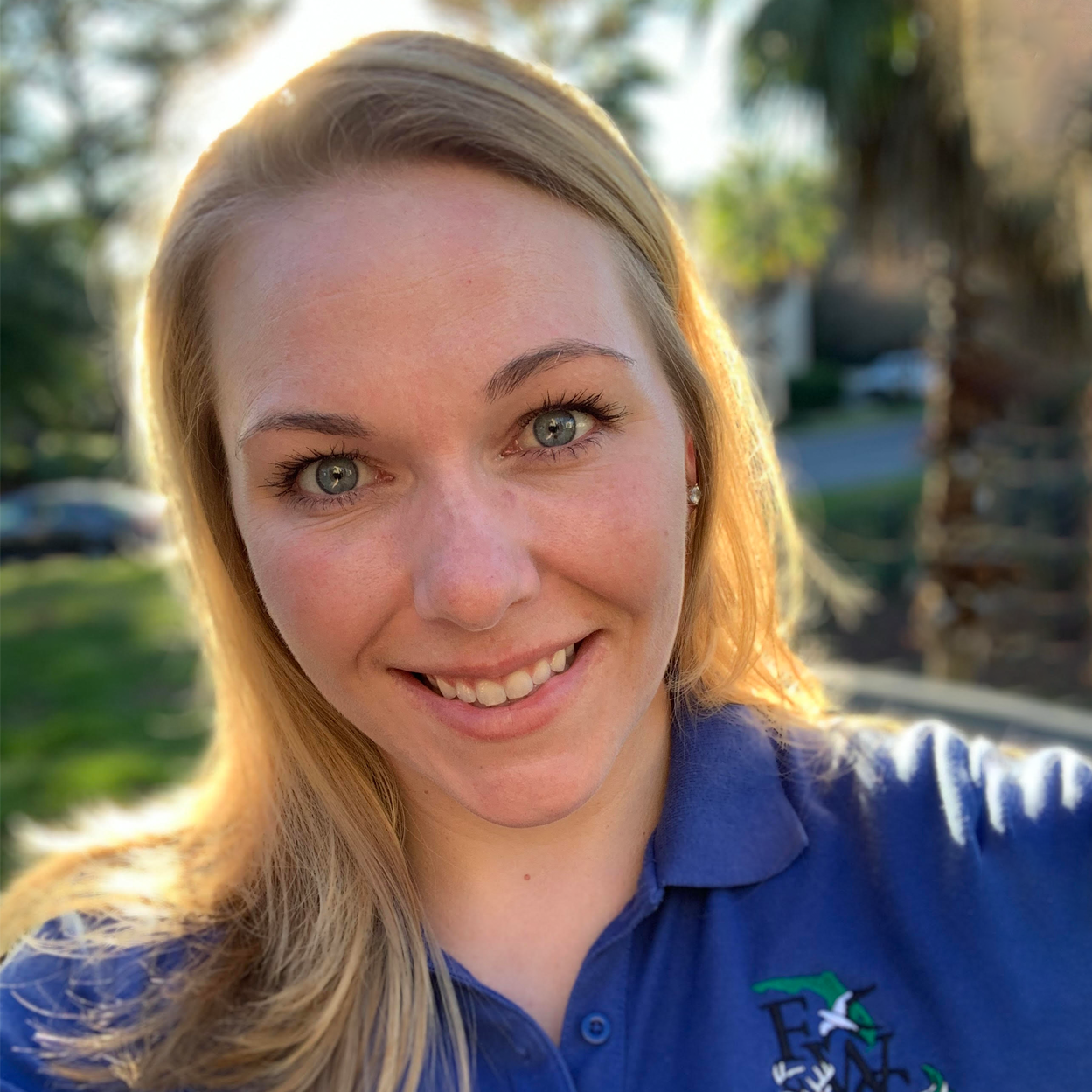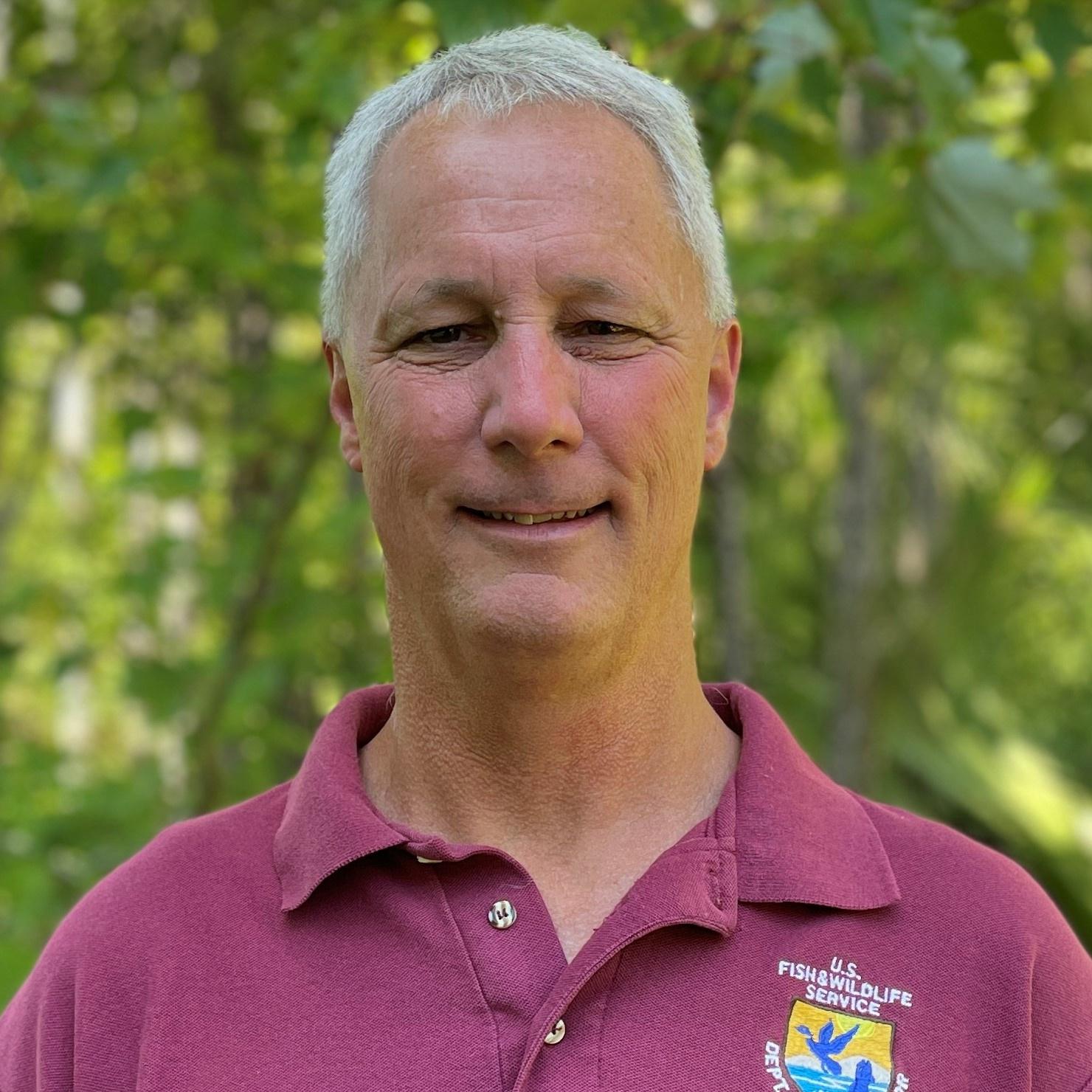Episode Photos
Changing Seas Videographer David Diez and Series Producer Alexa Elliott filming along Florida’s Indian River Lagoon, where a record-breaking number of manatees have died due to the loss of seagrass.
Pelicans gather on a dock along Florida’s Indian River Lagoon in Indian River County.
Director of Photography Sean Hickey captures seagrass growing inside a tank at Harbor Branch Oceanographic Institute in Fort Pierce, Florida.
F.A.U. Harbor Branch’s Dennis Hanisak, Ph.D. and Biological Scientist Richard Mulroy observe seagrass growth inside one of the nursery tanks.
F.A.U. Harbor Branch’s Dennis Hanisak, Ph.D. prepares to restore some seagrass he reared in a tank back to the Indian River Lagoon.
Director of Photography Sean Hickey filming the Indian River Lagoon from F.A.U. Harbor Branch Oceanographic Institute in Fort Pierce, Florida.
Mote Marine Laboratory and Aquarium’s Beth Brady, Ph.D. prepares to launch a drone to look for sick or emaciated manatees as they gather for warmth in DeSoto Park, located in Satellite Beach, Florida.
Manatees can’t tolerate water temperatures below 68 degrees for long periods of time, so they migrate to warmer waters and gather to avoid cold stress, which is comparable to hypothermia in humans.

© Florida Fish and Wildlife Conservation Commission
Sarah Barrett with the Florida Fish & Wildlife Conservation Commission opens a cooler filled with lettuce on Feb. 4, 2022, to be fed to manatees at the experimental feeding site located near FPL’s Cape Canaveral Clean Energy Center.
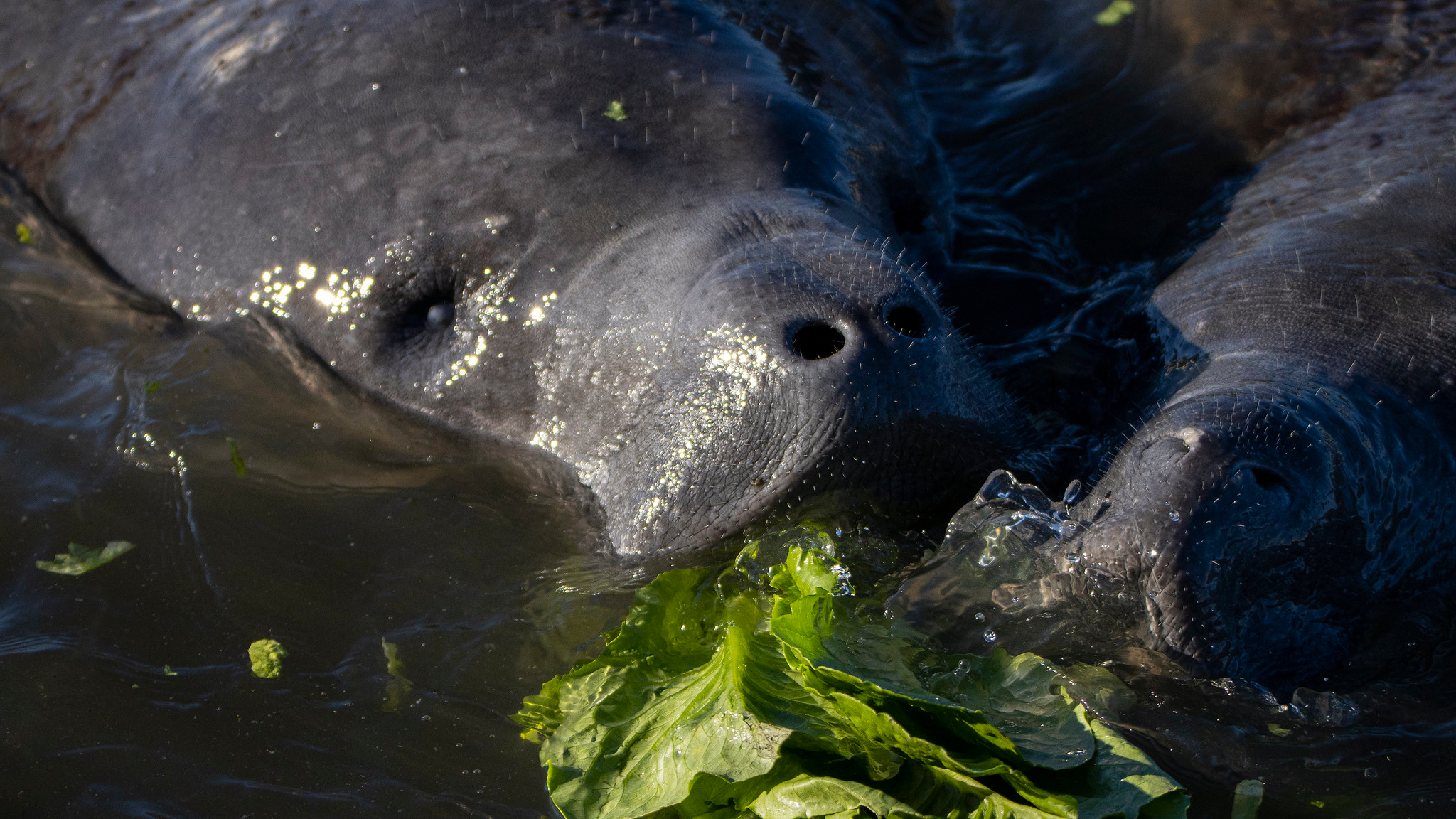
© Florida Fish and Wildlife Conservation Commission
Manatees eating lettuce (provided by staff) at the Temporary Field Response Station near Cape Canaveral, as part of an experimental feeding trial to help prevent starvation during the winter.
Wildlife officials say 1,101 manatees died in 2021, Florida’s worst year on record. Repeated algae blooms, fed by pollution, have killed off seagrasses, leaving manatees without their main food source in the Indian River Lagoon.
A manatee comes up for air at Manatee Lagoon in West Palm Beach, Florida. Manatees can hold their breath underwater for up to 20 minutes, but they generally surface every 5 to 10 minutes for fresh air.
Director of Photography Sean Hickey films manatees gathering near the warm water discharges from FPL’s Riviera Beach Clean Energy Center during a chilly South Florida day in February 2022.
During Florida’s winter months, manatees attract a crowd as the sea cows rest in waters warmed by the power plant discharges at Manatee Lagoon in Palm Beach County.
A pair of dolphins swimming in Florida’s biodiverse 156-mile Indian River Lagoon, which supports hundreds of wildlife species.
Captain Paul Fafeita of “Just Bumminit” River Tours shares his perspective on the loss of seagrass in the Indian River Lagoon near Vero Beach, Florida, over time.
The Indian River lagoon is an estuary where saltwater from the Atlantic Ocean mixes with freshwater from the land and tributaries. The average depth is only 4 feet.
Director of Photography Sean Hickey filming in the Indian River Lagoon, where seagrass was once plentiful. This loss of forage for manatees led to starvation and contributed to a mass die-off beginning in 2021.
Volunteers contribute seagrass fragments which are placed inside one of the 34 nursery tanks at Florida Oceanographic Society in Stuart, Florida.
Florida Oceanographic Society’s Loraé Simpson, Ph.D. checking on progress in the seagrass nursery. Once the seagrass outgrows the tanks, the next step is to replant it into the nearby wet nursery so the pieces can spread out and grow better.
An underwater view of the seagrass growing inside Florida Oceanographic Society's wet nursery. When the time is right, the seagrass is replanted into the Indian River Lagoon.
Florida Oceanographic Society’s Research Associate Vivienne Main holds a biodegradable mat filled with healthy seagrass fragments that will be replanted in the Indian River Lagoon to restore the seagrass meadows.
The medical pools inside ZooTampa at Lowry Park is where manatees get individualized care by staff.
Flapjack, an emaciated young manatee, is getting tube fed a smoothie to help him gain weight, less than a month after being rescued.
ZooTampa at Lowry Park Animal Care Supervisor Jaime Vaccaro is inserting a nasogastric tube through the manatee’s nare. She is listening for the correct placement of the tube into the stomach to make sure the tube does not enter the manatee’s lungs.
Flapjack’s animal care team says he is making good progress on gaining weight and they are optimistic he will eventually be released back into the wild.
The Changing Seas crew interviews Save the Manatee Club’s Cora Berchem at Blue Spring State Park.
A record-breaking 740 manatees were counted in a single day at Florida’s Blue Spring State Park in early February 2022. The spring provides a place for the manatees to rest during winter months where the water temperature remains a comfortable 72 degrees.
